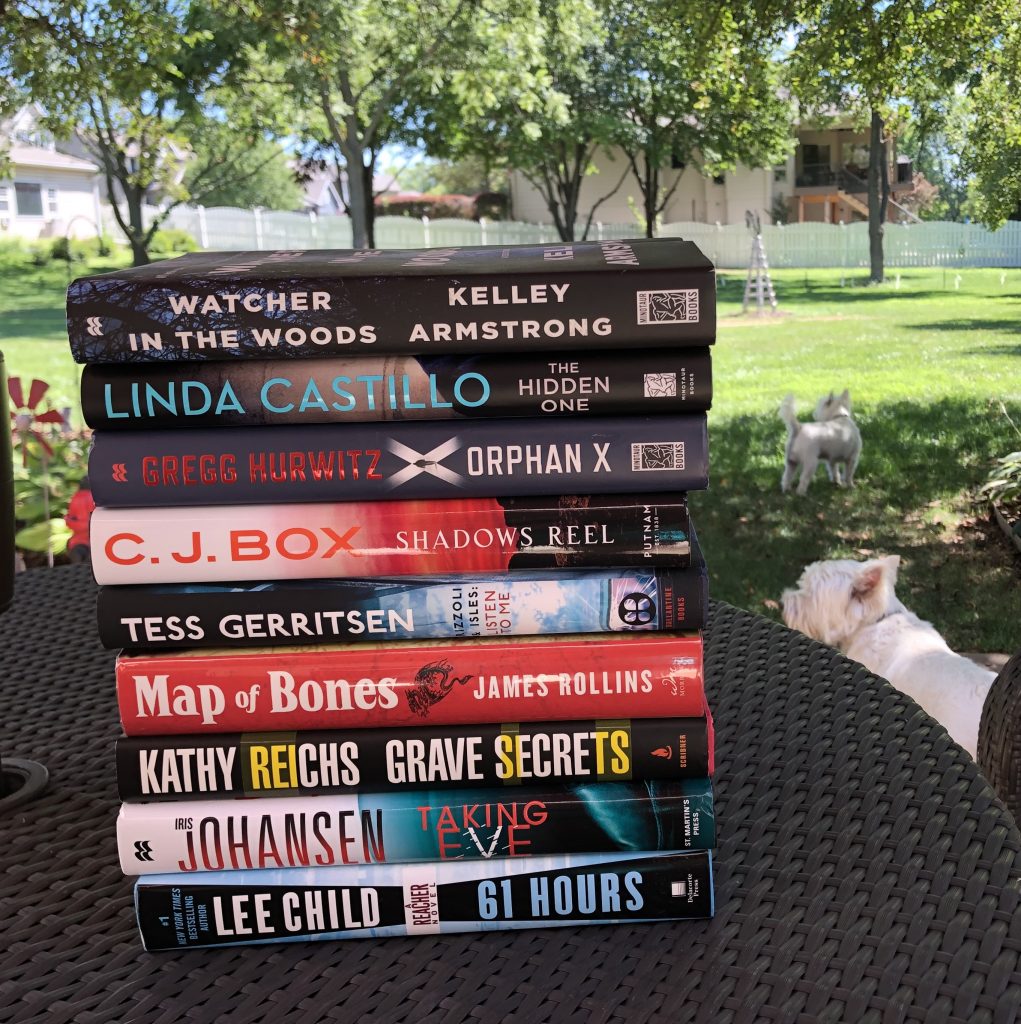by Alex Kava

Last month, I received this Facebook message from a reader with a great question: “Maggie O’Dell was my introduction to thrillers back when I was maybe 14 or 15 years old, so I’m really happy there’s this new series with Ryder and Grace, where Maggie is still part of a storyline. But I have a question: how old was Maggie when we first met her versus now, in the Creed’s series?”
When I introduced Maggie O’Dell in my first novel, A Perfect Evil, she was around thirty years old. That was August 2000. Fallen Creed was just released last March, twenty-two years later. If I had aged her in real time, Maggie would be fifty-two years old. The FBI has a mandatory retirement age of fifty-seven for their special agents. I would have aged her right out of a job.
Embarrassingly, I was on track to do just that. It made sense. I was writing a book a year, so I thought my characters should be a year older with each one. It wasn’t until a wise woman named Phyllis Grann told me otherwise.
Phyllis was already a legend in the publishing industry by the time we started working together. She became the first female CEO of a major publishing company in 1987, what we then knew as G.P. Putnam’s Sons. Some authors she published and/or edited include Tom Clancy, Patricia Cornwell, Dean Koontz, Ken Follett, and Nora Roberts.
When she left Putnam, many thought she had retired, but perhaps boredom led her back to where she began her career at Doubleday. She wanted to choose and edit only a handful of authors each year, and somehow, I was lucky enough to be one of them.

Phyllis liked Maggie O’Dell, so much she courted me away from my previous publisher. She gave me the best piece of advice when she told me I needed to stop aging Maggie. Just because it was a year later for me didn’t mean it had to be for Maggie. The next story could happen at any time after the last. It could even be as little as a month or two. The first time Phyllis suggested this, I remember she added that if Tom Clancy had listened to her, he wouldn’t have needed to bring in Jack Ryan’s son.
However, Clancy obviously had much respect for Phyllis. He once said (in an interview with New York Magazine), “Most of the money I make is because of her. Like Spielberg makes movies, she makes books.”
She was a force to be reckoned with, and I was determined to absorb every morsel of advice. We worked together on four books—I wish it could have been more—before she retired for real.
It reminded me again of her advice last month when Daniel Silva’s latest book was released. Years ago, Silva admitted, “A very smart publisher named Phyllis Grann asked me to write a second Gabriel Allon novel. I have to admit I had to be talked into it. I thought Gabriel might be a bit too melancholy…and at nearly fifty years of age, perhaps a bit too old as well.”
Silva’s The Kill Artist, introducing Gabriel Allon, was published in 2000, the same year as Maggie O’Dell’s debut. His latest, Portrait of an Unknown Woman, is #22 in the series. For several books now Silva has talked about Gabriel being an old man, and now he’s retired from Israeli intelligence.
But Maggie O’Dell? She’s still in her thirties. In fact, the last three Ryder Creed novels—where Maggie is a co-protagonist—less than a year’s gone by. Desperate Creed takes place in March during a tornado outbreak. In Hidden Creed, the characters slog through June thunderstorms in the Florida Panhandle. And Fallen Creed picks up during an unexpected Nebraska blizzard at the beginning of October. All in the same year.
I’ve come to love the shortened timeline. I think it gives readers a feeling of simply picking up where they left off. But there’s another benefit. It’s not only Maggie’s age I’ve slowed down, but the dogs’ as well. At the rate I’m going, hopefully Grace will never be too old to be a scent dog.
I hate to think of my favorite series characters retiring: Kate Burkholder, Joe Pickett, Eve Duncan, Rizzoli and Isles, Orphan X, and the Sigma crew.
Have you thought about how old your favorites really are? The ones you’ve been reading for years. And just how close are they to retiring?

















































Just as Sue Grafton keep Kinsey forever 30!
In my Theresa MacLean series, each book was a different year, which allowed me to eventually send her daughter, 15 in the first book, off to college, and have Theresa face her 40th. But the latest series of 6 books all take place within the same year, starting in April and ending at Christmas, and I liked that too. It keeps up the pressure on the characters to have so much trauma in a short time!
Lisa, did you plan for all six to happen in the same year? Or did it just sort of happen? My biggest problem is making sure the recurring characters have time to heal from physical injuries. Ryder has had his ribs broken, back bruised and gotten stabbed in seven months.
I think it’s great that Maggie O’Dell is more or less “ageless!” Two main characters, Dr Cameron Talbot, and White House staffer, Samantha Reid, featured in my five thrillers are never described in terms of actual years — just as a bright young women — which gives me great latitude when writing future stories. I also remember the super bestselling (late) author Stuart Woods’ key character, Stone Barrington, starred in dozens of novels, solved a multitude of crimes (and had tons of affairs) – and yet didn’t age all that much although a young son was eventually introduced. Thanks, Alex, for a very thoughtful post!
Karna, I can’t believe how many authors knew how to do this! And I had to be told. LOL! But I honestly didn’t read a lot of series until I accidentally started one.
Oh, gosh, Maggie. What a wonderful person, er… character! Your series is so good. I’d never thought of the aging process for Maggie. Love the way you’ve kept her relevant, and in a job, Alex!
Oh, I age my series characters, Cass Raines, PI, and Det. Harriet Foster, at a glacial pace. Weeks pass from book to book, maybe I’ll stretch it season to season, but no faster. My characters are pretty active. They’re working the means streets hunting, chasing, nailing killers. They jump off boats, climb rickety ladders to roofs, runs through frozen forests kicking up snow, go toe to toe with creepy serial killers. I’m not saying it wouldn’t be believable if I made them both 60 years old, but I think it would kind of be a stretch. Besides, I’d worry about their knees and recovery rate, and I’m pretty sure readers would too.
Great post! I love the idea of manipulating time to stand still between novels. It occurs to me that I often binge-read a series well after it’s complete, and I actually prefer when one picks up right where the other left off.
As a reader, I prefer it when the sleuths don’t age. I think of them as timeless friends, who remain a constant no matter which book I read or when I read it. In addition to Maggie O’Dell, Nero Wolfe comes to mind.